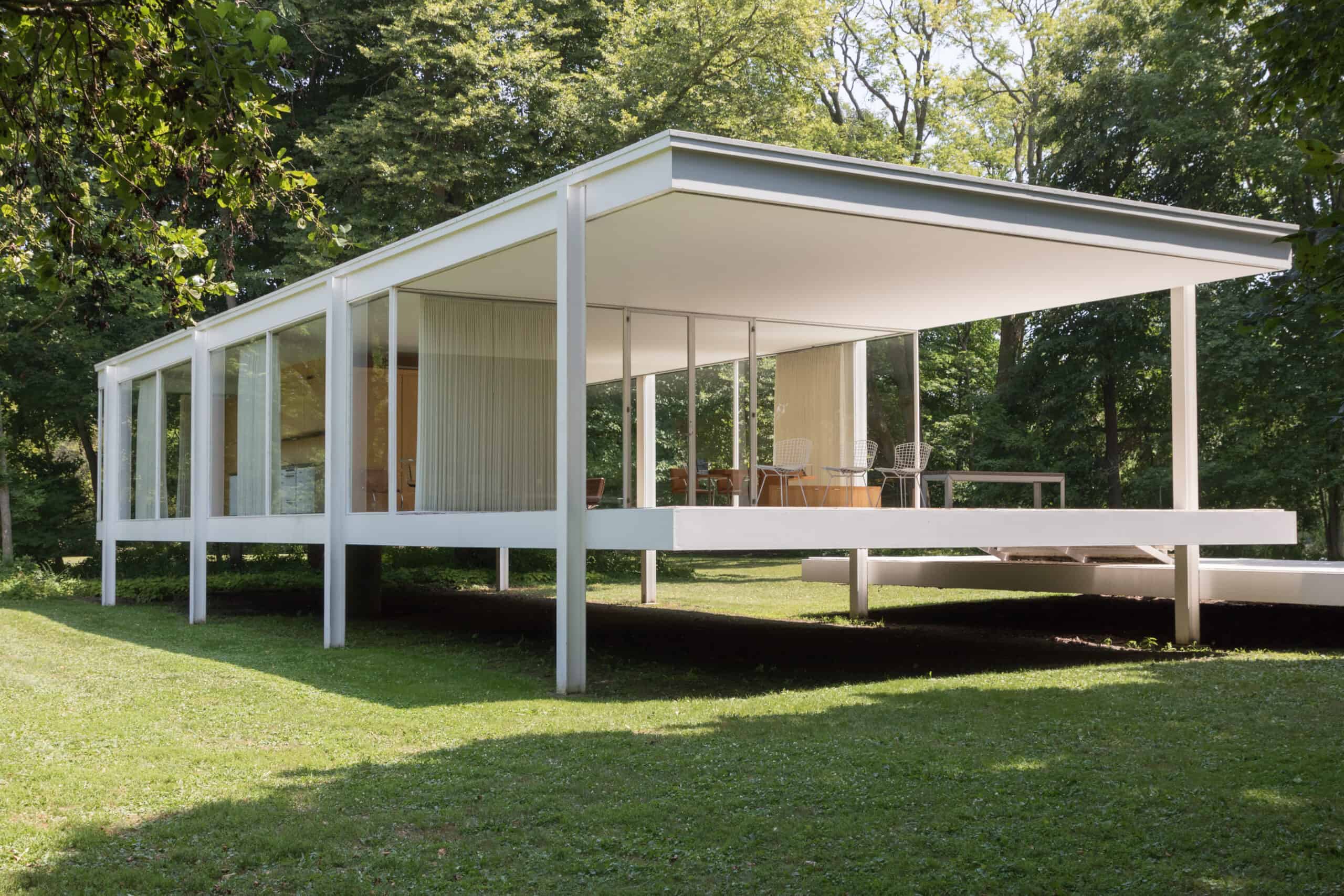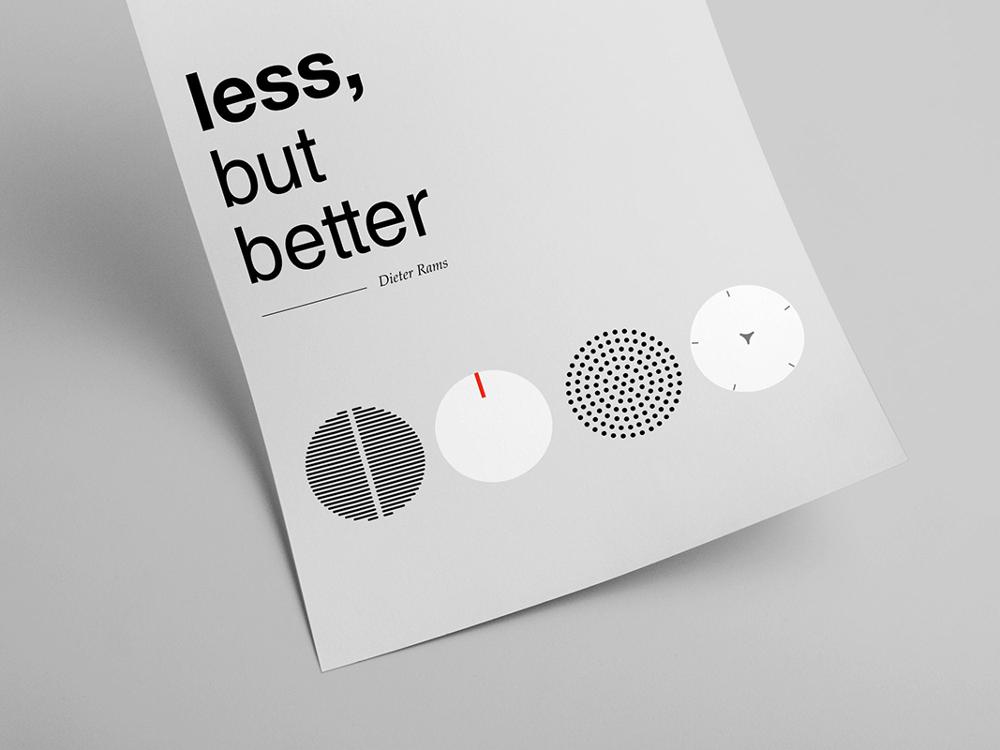Less is defined as ‘a smaller amount’ but what does less stand for when it comes to architecture? Some famous quotes by some brilliant scholars are “Less is More” by Ludwig Mies Van Der Rohe, “Less is Bore” by Robert Venturi, “Less but Better” by Dieter Rams, and “Doing More with Less” by R. Buckminster Fuller. Is less more? Is less boring? Is less better or worse? These quotes are used now and again in the architecture field, but what do they mean? Every scholar interprets ‘less’ differently, so what do we believe? What do we practice?
Less is more.
What did Van Der Rohe mean when he quoted “less is more”? It’s like saying even is odd. Less is quite literally the opposite of more. In an era where people kept wanting more, Rohe meant less is enough. He represented a minimalistic approach in a simpler and more subtle way. It includes less ornamentation, less furniture, and less clutter, all contributing to more open space. Not just in architecture, but apply it anywhere, and it makes sense. Less stress means more calm. Less toxic means healthier. Fewer problems lead to more happiness. Less workload means fiction. Van Der Rohe believed that less is good and quantity doesn’t always reflect quality. Fewer elements executed properly have a greater impact than loads of elements kept for the namesake. Only keep what’s necessary, and that will create a subtle and simple space that has less rubbish and more space for you.

Less is bore.
Robert Venturi was an anti-minimalist; therefore, less was bore to him. Venturi started the postmodern movement, where it was okay to do more colors, more furniture, more elements, and more everything. There is a book named “Less is a Bore” by Phaidon that has around 200 post-modern structures that emphasize Venturi’s Less is Bore. The structures shown are ‘not boring’. Some people may like those structures, but some people will use words like “gaudy” to describe them. One can have a look at them and decide for oneself which group of people they belong to. Venturi’s structures weren’t really appreciated by everyone as he added more of everything, and that was an alien concept during those days. People weren’t ready for that, and after looking at the structures, maybe they still aren’t.

Less but Better
Dieter Rams is a designer; apart from “less but better,”, another beautiful quote from him is, “You cannot understand good design if you do not understand people”. It goes to say that you have to know the user to design anything for them, whether a pen or a house. Rams has also written 10 commandments for good design, which designers still follow. Coming back, Less but Better was taken from his speech, where he said “Good design is as little design as possible”. In other words, Rams meant simple but not basic. With Rohe saying that less is enough and Venturi arguing that it is not, Rams achieved a balance by saying less but better. Less doesn’t have to be ugly. The clutter should be less, but it shouldn’t feel empty. The elements should be few, but the functionality shouldn’t be affected. You choose simple options, but the aesthetic should be preserved. We use only the necessities and decorate them elegantly.

Doing more with less
Buckminster Fuller said “doing more with less,” and he simply meant to produce more results with fewer resources. It’s doubtful that he meant it in terms of architecture, but it says to be productive, efficient, and effective with whatever you have, and that can be applied in any field. If taken architecturally, you use whatever raw materials are available to you and make the most of them. You give your best and try to make an outstanding structure even on the tiniest land parcel given to you. There’s less need to explain this quote to architects because they practice it in their lives more often than they want to, and they mostly work more with less fees. So, even though this quote wasn’t meant for architects, they are practicing it the most.

Conclusion
All the above quotes use the word “less” with different intentions. So, what exactly is less? It is okay to state that it varies from person to person and from situation to situation. Everyone makes sense in their place. Rohe said less is enough; it makes sense when you see how less helps you save space, money, and time. So, yes, less is enough, but Venturi said that it is boring. If you can afford everything and like filling up spaces with ornamentation, then why would anyone settle for less? So, for them, less is boring; they are free to empty their pockets and fill their huge spaces with anything they want. The Rams said ‘Less but Better’. This should be a lifestyle. You could be doing the bare minimum and still slay. Fuller said to do more with less, and it’s something we all should look at every morning before starting the day to add motivation and remind ourselves to keep working with whatever we have. In conclusion, it is safe to say that less is subjective.
Image Sources:
- Image 1: Artland Magazine [online] Available at – https://magazine.artland.com/wp-content/uploads/2021/09/00-Paul-R.-Burley-Own-work-scaled.jpeg
- Image 2: Phaidon [online] Available at – https://www.phaidon.com/resource/042-m2-building.jpg
- Image 3: Des1gnon [online] Available at – https://www.des1gnon.com/wp-content/uploads/2021/04/Dieter-Rams-Poster-Less-but-better-Design-Quotes-Dieter-Rams-Print-Braun-Poster-Dieter-Rams-Braun-2.jpeg
- Image 4: Wallpaper Magazine [online] Available at – https://cdn.mos.cms.futurecdn.net/Ls4sjsHThdGTQTvmd38eeg.jpg















